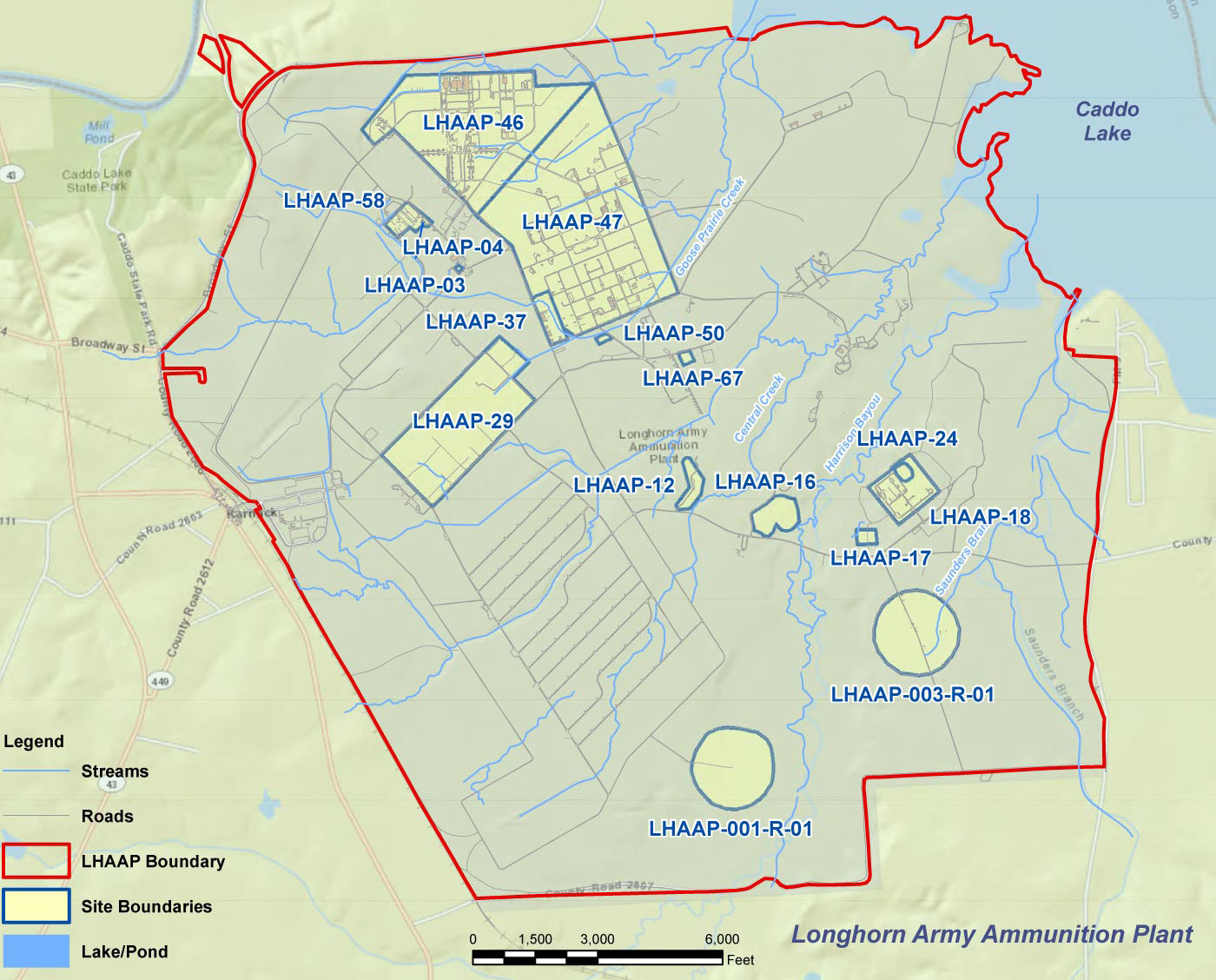Longhorn Army Ammunition Plant
Environmental Restoration Program
LHAAP-16
Site Description/History
LHAAP-16 is a capped landfill covering approximately 20 acres in the south-central portion of the former LHAAP. Harrison Bayou is located along the northeastern edge of the site and flows into Caddo Lake. The landfill, which covered approximately 13 acres prior to cap construction, was established in the 1940s for the disposal of solid and industrial wastes, until the 1980s, when disposal activities were terminated.
Remediation Activities
The U.S. Army and the U.S. Environmental Protection Agency ( USEPA) signed a Record of Decision ( ROD) in 1995 approving an Interim Remedial Action ( IRA) for LHAAP-16 to mitigate potential risks posed by buried source material at the site. The IRA included the construction of a landfill cap, considered a component of the final remedy for the site. Construction of the multilayer cap was completed in 1998.
Previous investigations identified groundwater impacted with chlorinated volatile organic compounds, perchlorate, and metals at LHAAP-16. The source of this impacted groundwater is the landfill. A groundwater extraction system was voluntarily installed by the U.S. Army in 1996 and 1997 as a treatability study to prevent the groundwater plume from migrating to Harrison Bayou. The extraction system has been operating since 1997.
The Final ROD was finalized in September 2016 with a selected remedy of Cap Maintenance, In-Situ Enhanced Bioremediation, Biobarriers, Monitored Natural Attenuation ( MNA), and Land Use Controls ( LUC). The Remedial Design ( RD) for the LHAAP-16 selected remedy was approved in January 2017.
Remedial Acton Work Plan ( RAWP) was completed in June 2018. In situ bioremediation ( ISB) was completed in December 2019 and a Remedial Action Completion Report ( RACR) was completed in April 2021
Contaminants of Concern
TCE, cis-1,2- DCE, vinyl chloride, and perchlorate are the primary COCs in groundwater
Current Phase
Post-ISB Remedial Action Operation ( RA-O) groundwater monitoring is continuing.
Future Phase
Site Closeout

